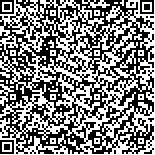Analysis of Unsuccessful Forecasts of Several Weak Rainfall Processes in Beijing
- Article
- Figures
- Metrics
- Preview PDF
- Reference
- Related
- Cited by
- Materials
Abstract:
The public weather forecasts were not so correct for the time period from winter 2011 to early spring 2012 in Beijing. Of the nine weak precipitation processes (WPPs), four cases were false alarms, two were missed and three were better forecasted. Through the forecast verification, synoptic analysis and comparison of model forecasts for the nine processes, following results are achieved. The synoptic conditions of WPPs in Beijing vary case by case. The weather patterns at 500 hPa can be classified into three categories: patterns of twotroughs oneridge, onetrough tworidges and onetrough oneridge. The surface situation can be classified into four patterns, which are cold front, occluded front in North China, the easterly wind and inverted trough and the eastward returning current. Most WPPs are characterized by poor vapor conditions in lower troposphere or weak dynamic lifting conditions. For the WPP with thinner wet layer, higher vapor saturation layer and higher lifting condensation layer, numerical prediction models tend to give false alarm; for the WPP with favorable vapor condition at low level, lower vapor saturation layer and lower lifting condensation layer, the models are prone to omission. The subjective precipitation forecast errors are mainly because forecasters did not sufficiently understand the structures of the weather systems and their developing mechanisms. Besides, they were lack of correction experiences for the model boundary water vapor and lifting conditions, which are critical factors for rainfalls.
Keywords:
Project Supported:
Clc Number:
P456,P458


Mobile website









